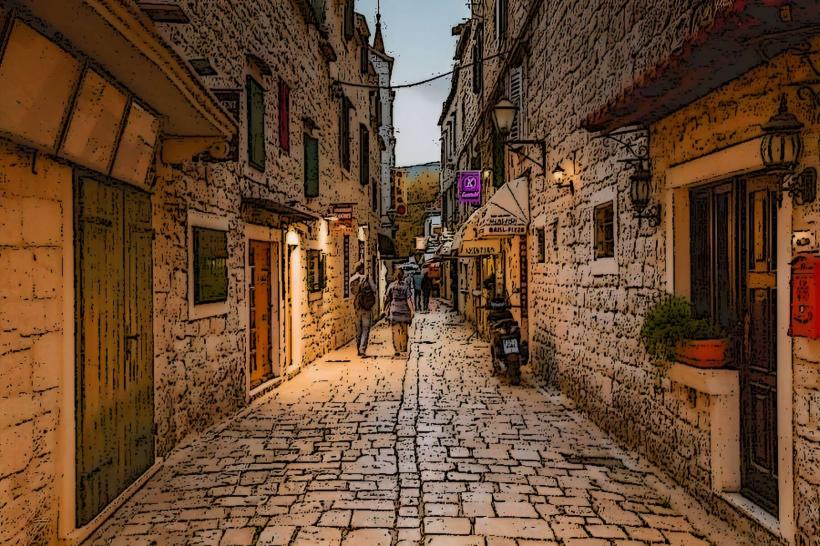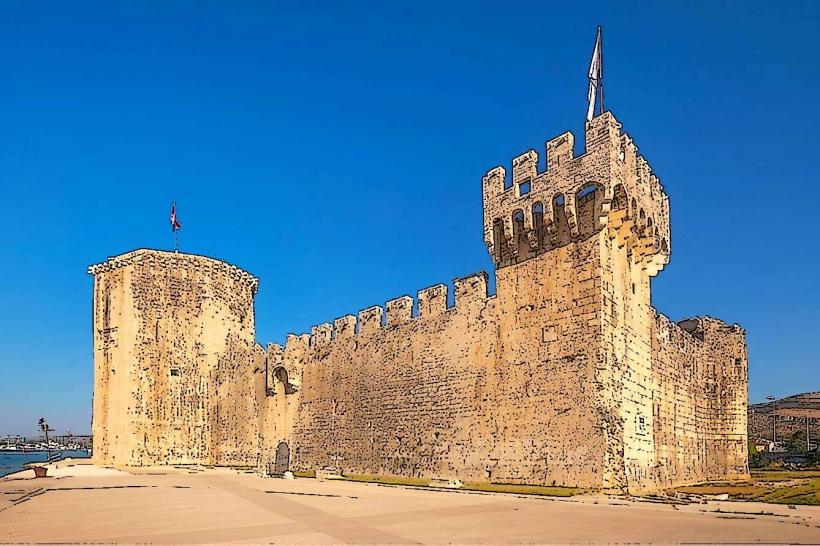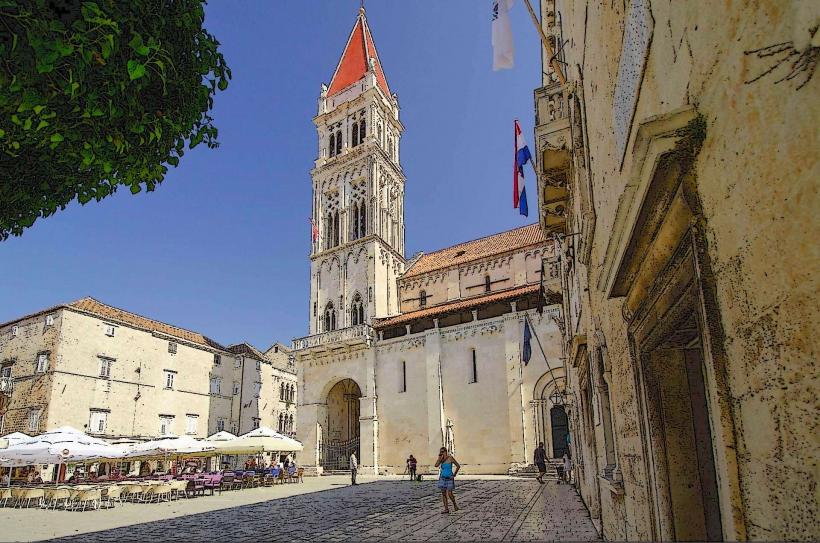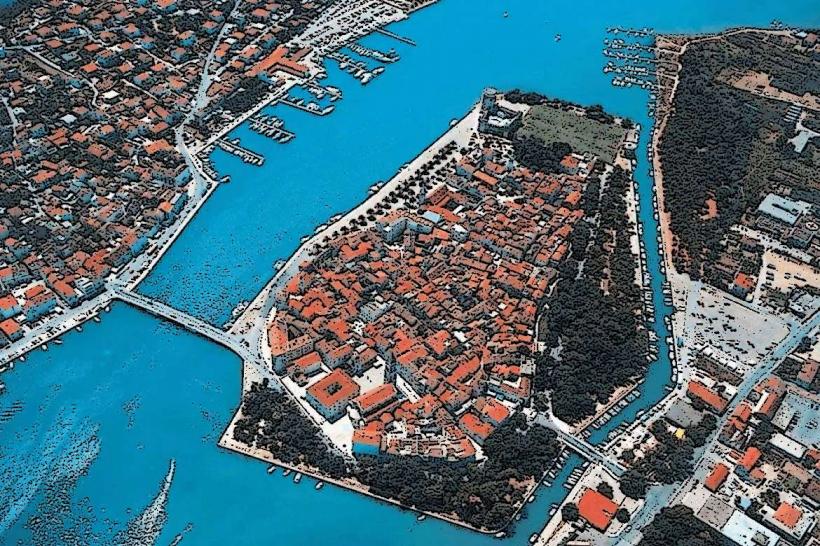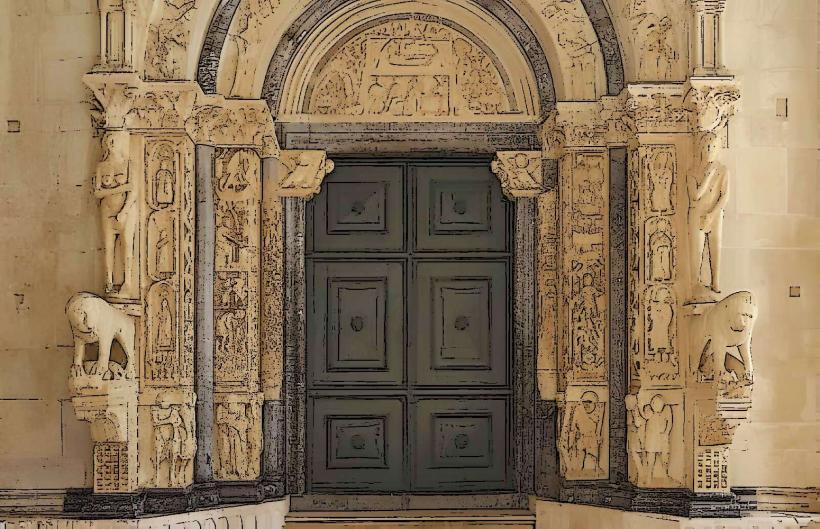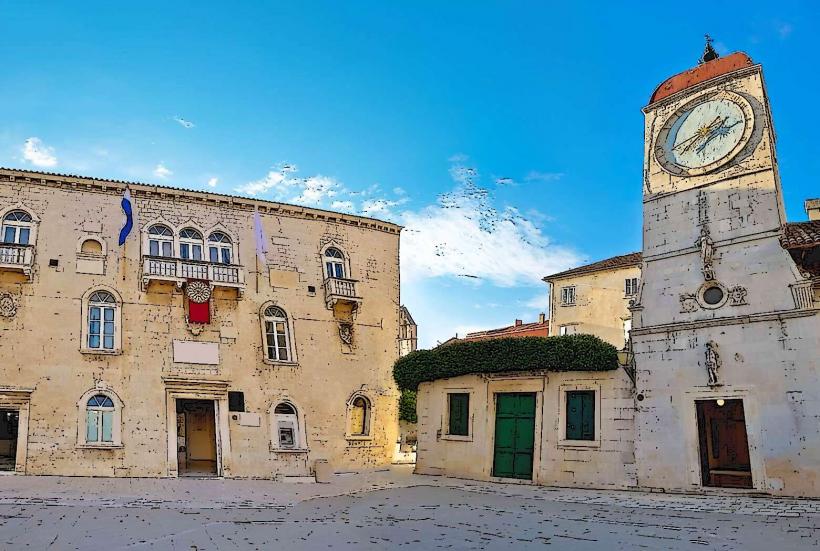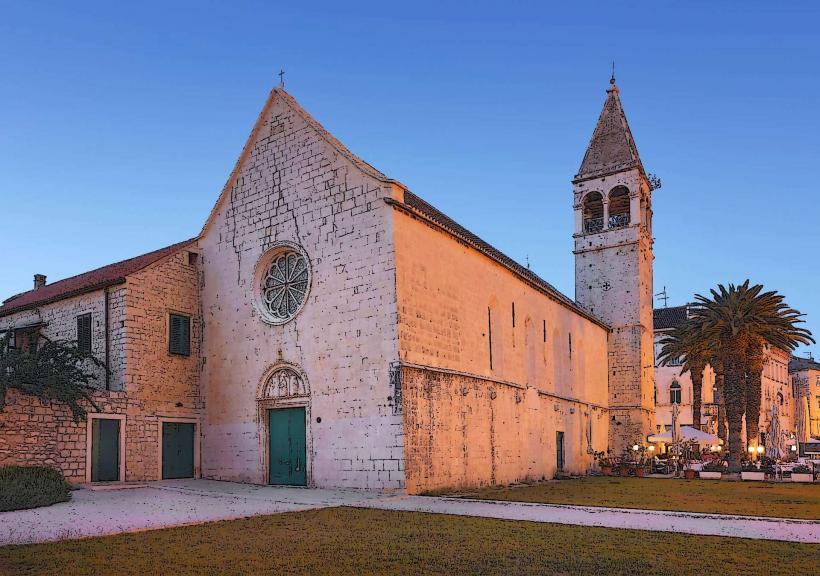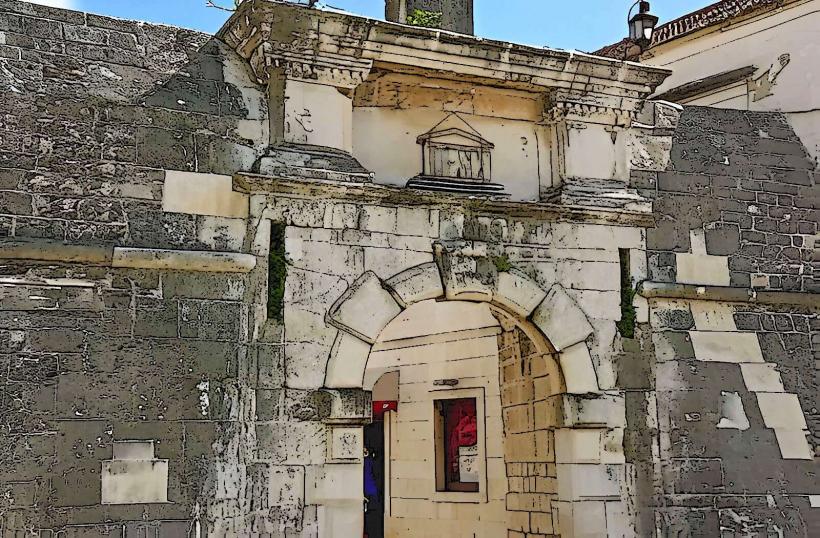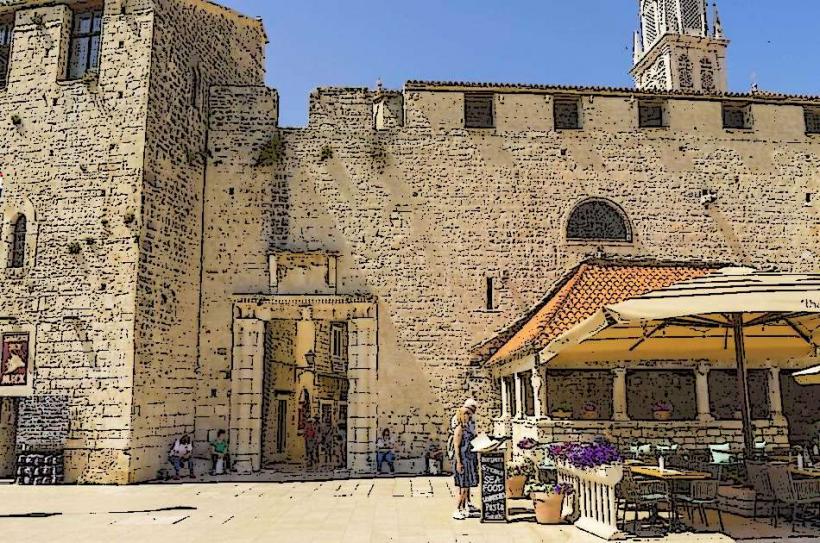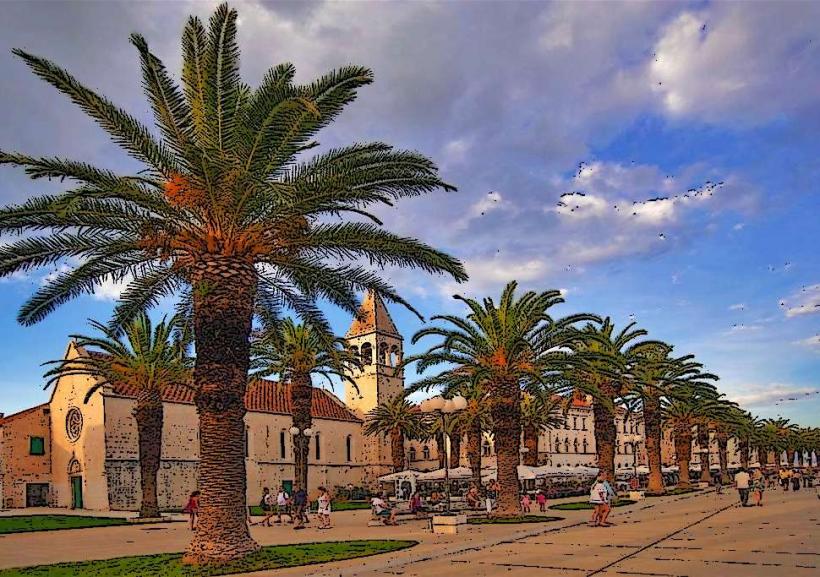Information
City: TrogirCountry: Croatia
Continent: Europe
Trogir, a small town on the central Dalmatian coast of Croatia, is renowned for its well-preserved medieval architecture, rich history, and picturesque setting along the Adriatic Sea. It has earned a place on the UNESCO World Heritage list due to its historical significance and charming old town. Here’s a detailed exploration of Trogir:
Geography and Setting
- Island Town: Trogir is located on a small island, connected to the mainland by a bridge and to the nearby Čiovo Island. The town’s strategic position on the Adriatic has made it an important harbor for centuries.
- Coastal Beauty: The town boasts a beautiful coastline with clear waters and is close to nearby islands like Brač and Hvar, which can be reached by ferry. The surrounding region offers picturesque bays, beaches, and natural beauty.
- Proximity to Split: Trogir is located about 27 kilometers west of Split, making it easily accessible and often visited by tourists exploring the central Dalmatian region.
City Layout and Neighborhoods
- Old Town (Historic Core): The heart of Trogir is its UNESCO-listed old town, a maze of narrow, cobbled streets, medieval buildings, and charming squares. The town is a blend of Romanesque, Gothic, Renaissance, and Baroque architecture.
- Waterfront and Harbor: The waterfront area along the port is lined with cafes and restaurants where visitors can enjoy the view of yachts and boats coming and going. The marina also attracts boating enthusiasts.
- Trogir's Fortifications: The town is surrounded by city walls and is home to several defensive towers and gates, including the Kamerlengo Fortress, which offers panoramic views of the surrounding area.
Cultural Atmosphere
- Historical Significance: Trogir’s history dates back to the Greek and Roman periods. It was a thriving Roman city and later became an important Venetian colony. This history is reflected in its architecture, monuments, and museums.
- Arts and Festivals: Trogir hosts a variety of cultural events throughout the year, including the Trogir Cultural Summer festival, which features music, theater, and traditional Croatian performances.
- Local Craftsmanship: The town has a rich tradition of local craftsmanship, with shops selling handmade jewelry, pottery, and traditional textiles. Artisans often display their work in the old town and along the waterfront.
Culinary Scene
- Fresh Seafood: As a coastal town, Trogir’s cuisine is centered around fresh fish, shellfish, and seafood stews. Grilled fish, octopus, and crni rižot (black risotto made with squid ink) are common dishes.
- Mediterranean Flavors: Mediterranean ingredients like olive oil, tomatoes, and herbs dominate local dishes. Trogir is also known for pašticada (a stewed beef dish), as well as pasta dishes.
- Dalmatian Wines: The region produces excellent wines, including Plavac Mali (a red wine) and Pošip (a white wine), which are widely served in the town’s restaurants and wine bars.
- Sweet Delights: Trogir offers traditional Croatian sweets, including rožata (custard pudding) and fritule (fried dough balls).
Nature and Outdoor Activities
- Beaches and Swimming: While Trogir itself has limited beaches, the nearby Čiovo Island offers several beautiful beaches with crystal-clear waters, perfect for swimming and sunbathing.
- Water Sports: Visitors can enjoy kayaking, sailing, and jet skiing along the Adriatic coast. Boat trips and private yacht charters are popular for exploring nearby islands and hidden coves.
- Hiking and Cycling: The surrounding areas of Trogir, including Čiovo Island, offer walking and cycling paths, as well as opportunities for hiking in the nearby hills with stunning views of the coastline.
- Island Hopping: Trogir’s location makes it an ideal base for island-hopping trips to Brač, Hvar, and other islands in the central Dalmatian region.
Daily Life
- Relaxed Pace: Despite its historical and tourist significance, Trogir has a relatively relaxed atmosphere. The locals embrace a slower pace of life, often seen in the cafés and piazzas where people gather to chat and enjoy the warm Mediterranean climate.
- Local Markets: Trogir has an open-air market where fresh produce, seafood, and local products are sold. The market is a lively spot in the mornings and offers a glimpse into daily life in this coastal town.
- Shopping: The old town is full of small boutiques and artisan shops, where visitors can buy handmade goods, local delicacies, and souvenirs such as olive oil, wine, and lacework.
Transportation and Connectivity
- Public Transport: Trogir is well-connected to the surrounding region by bus, with regular services to Split and other Dalmatian towns.
- Ferries and Boats: Trogir’s location along the coast makes it a great base for boat trips to nearby islands and along the Adriatic coast.
- Split Airport: Trogir is only 5 kilometers from Split Airport, making it easily accessible by plane for international travelers.
- Pedestrian-Friendly: The old town of Trogir is compact and pedestrian-friendly, making it easy to explore on foot. Many of the streets are narrow and lined with historic buildings, which adds to the town’s charm.
Climate and Seasonal Life
- Mediterranean Climate: Trogir enjoys a warm Mediterranean climate with hot, dry summers and mild, wet winters.
- Tourist Seasons: Summer is the peak tourist season, with vibrant festivals, events, and a bustling town center. Spring and autumn are quieter, offering a more peaceful experience, ideal for exploring the town’s sights without the crowds.
- Mild Winters: Winters in Trogir are relatively mild, with fewer tourists, making it a peaceful time to enjoy the historic sites and slower pace of life.
Modern Trogir
- Sustainable Tourism: In recent years, Trogir has focused on preserving its UNESCO-listed old town while promoting sustainable tourism practices. Many of the town’s hotels and businesses emphasize eco-friendly approaches.
- Tourism Infrastructure: While Trogir remains a small town, it has well-developed tourism infrastructure, with a variety of accommodations, from boutique hotels to luxury resorts.
- Growing Popularity: As the town becomes increasingly popular with tourists, there’s a growing emphasis on balancing tourism with local heritage and community life.
Unique Character
- Historical Richness: Trogir is a treasure trove of history, with ancient Roman, medieval, and Venetian influences visible in its architecture, monuments, and urban layout.
- Charming and Intimate: Unlike some larger Croatian cities, Trogir offers an intimate and laid-back atmosphere, where visitors can explore at their own pace.
- Cultural Blend: Trogir has a unique blend of Mediterranean, Slavic, and Venetian cultures, making it an interesting destination for history enthusiasts and culture lovers alike.
Trogir is a town where history, culture, and natural beauty come together to create an unforgettable Mediterranean experience. Whether you’re wandering through its cobbled streets, relaxing on a nearby beach, or enjoying the local cuisine, Trogir offers a perfect blend of charm and tradition.

